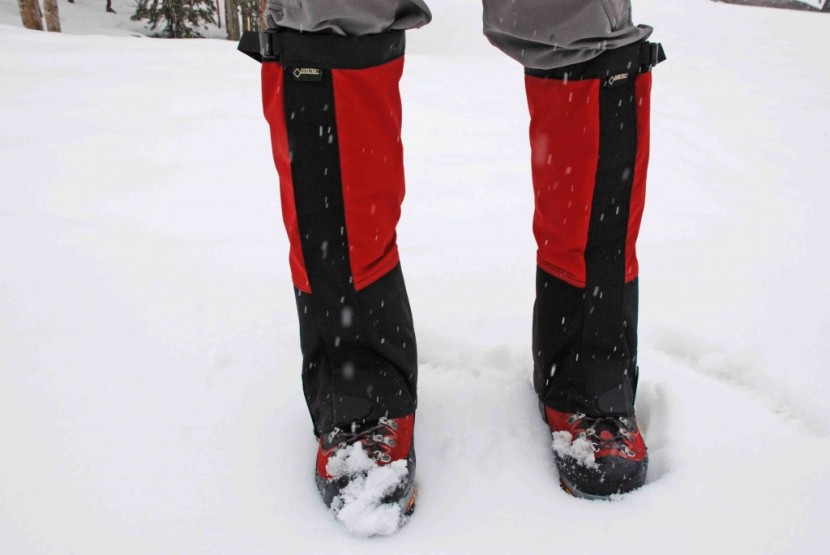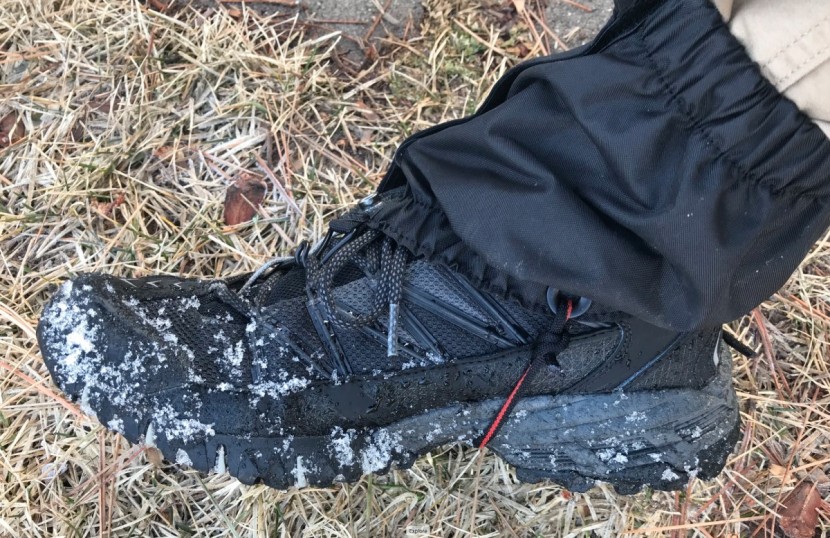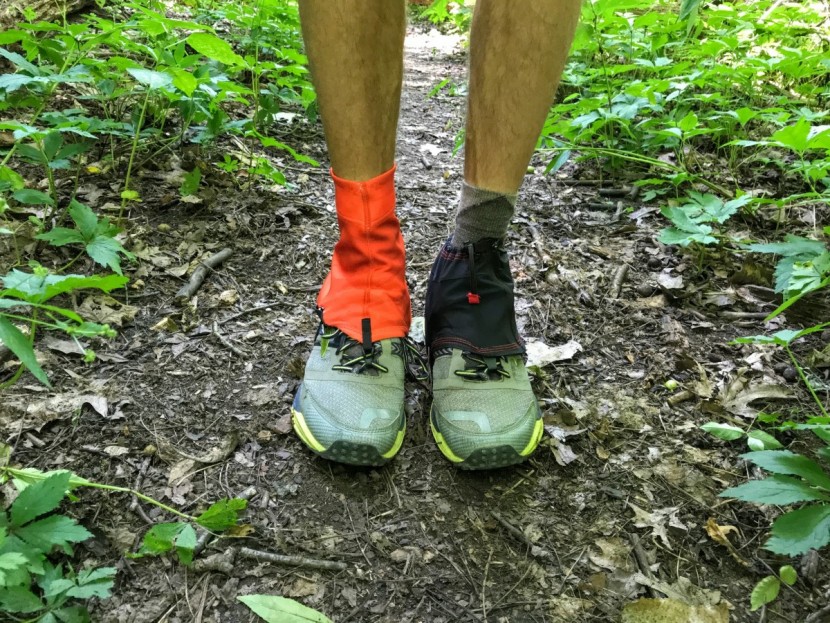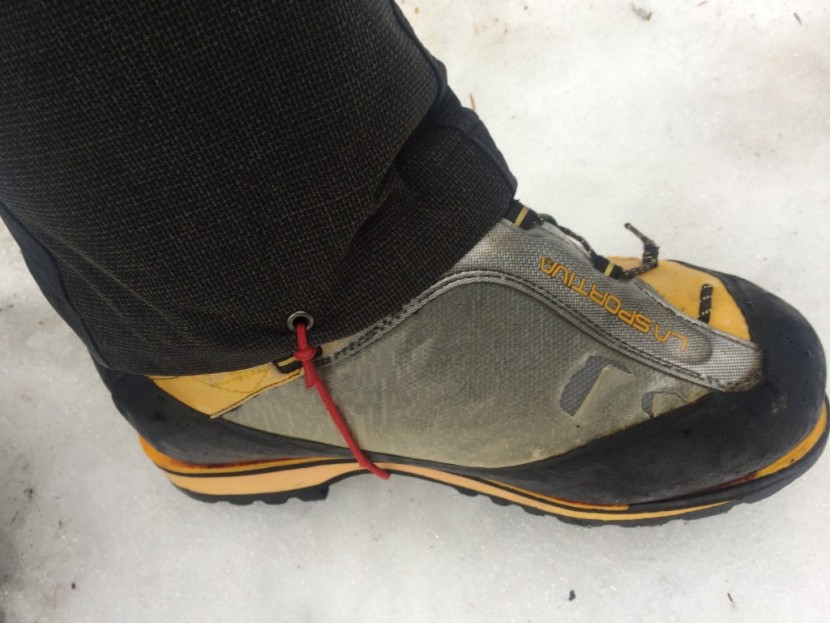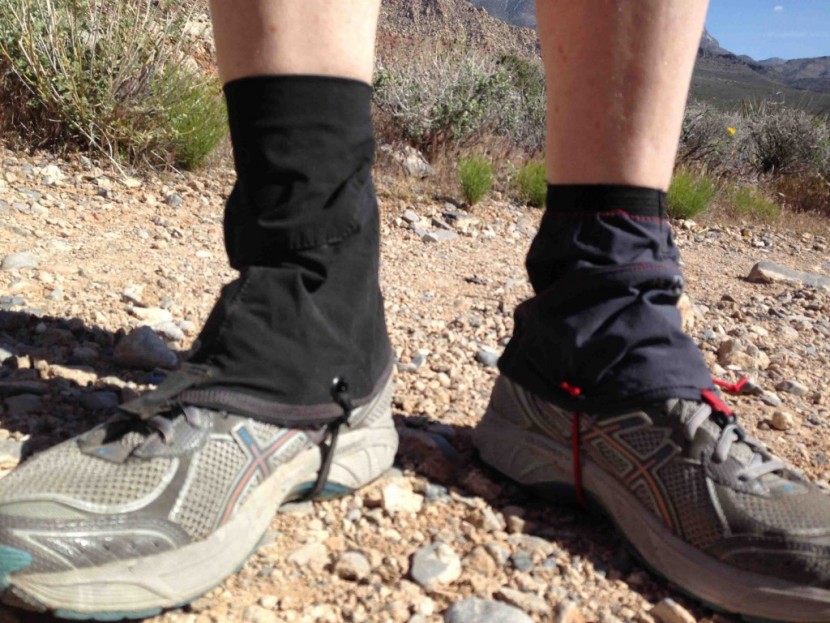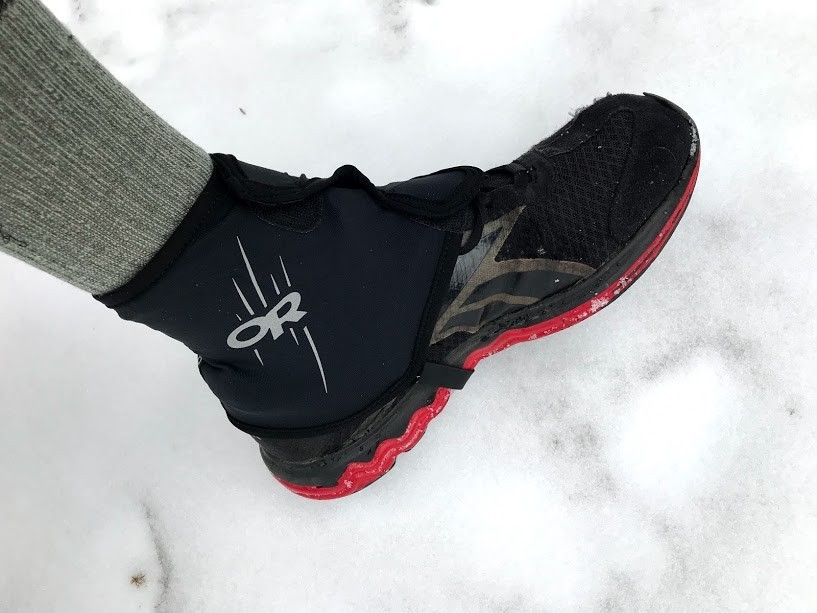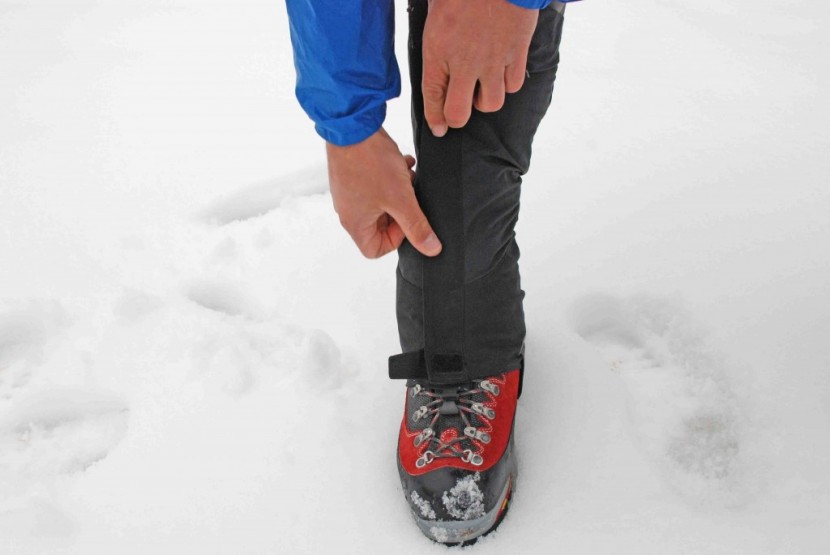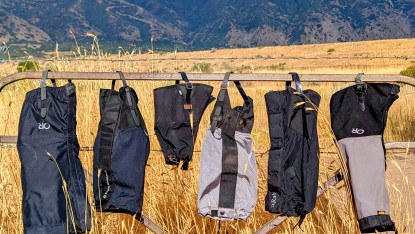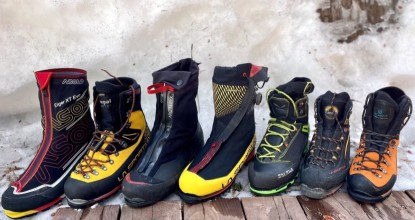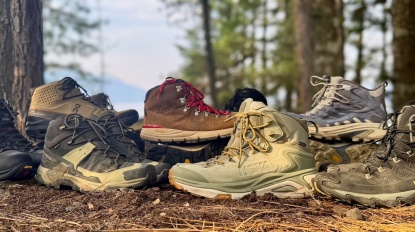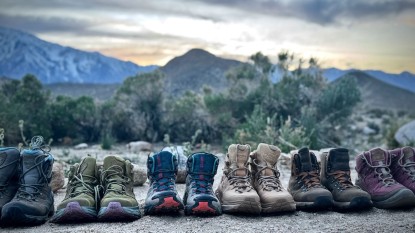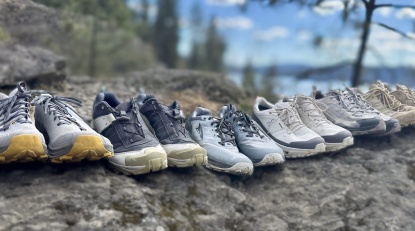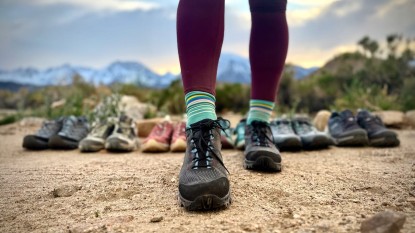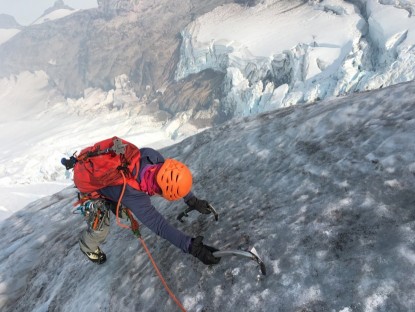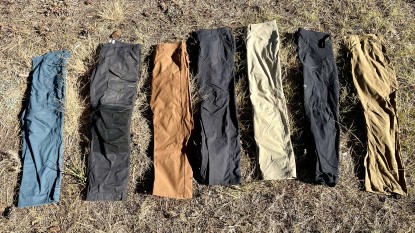For a lot of people, gaiters are one of those pieces of equipment that you don't realize you want until you dump out your shoes at the end of a long day on the trail. In this article, we delve into the pros and cons of different styles, what different types of gaiters are used for, and whether they are worth including in your kit on your next adventure. We will also offer some tips on how to fit them properly so that they work as well as they are meant to. Whether mountaineering, scrambling, trail running, distance hiking, or bushwhacking, we will help you make sense of your options so that you can make the right choice for your next adventure.
Types
Long, mid-length, or short, gaiters all fundamentally perform the same function: they keep stuff out of your shoes. However, they can be divided into a surprising number of specialized categories. For our purposes, we'll stick to the most common varieties: mountaineering/expedition, regular hiking, and trail running/distance hiking.
Mountaineering/Expedition
We can generalize a few things about this type of gaiter. (1) They are full-length. That is, they cover much of the lower leg. This helps ensure that snow and ice stay out of your footwear as you break trail. Pants also stay very well secured underneath them. (2) They are made from heavy-duty materials. Most are made from thick gauge nylon that can withstand repeated abrasions from ice and rock. (3) They are waterproof. Many gaiters claim some degree of water resistance. However, mountaineering gaiters should be waterproof. Lower length gaiters are, to some extent, a product of convenience — it's just a nicer experience to not have to worry about a pine needle piercing your toe, or sand rubbing against your heel. However, mountaineering gaiters need to keep your feet dry. Even if you aren't going on a mountaineering expedition, presumably you are considering a heavy-duty gaiter because you are planning to do some heavy-duty work, whether that is summiting Denali or shoveling out your driveway after a blizzard.
Hiking
Models meant for hiking are the ones that get the most use in the gaiter world. They are typically shorter than those made for mountaineering and winter travel, falling from high up on your ankle to your calf. The material is often thinner than mountaineering models, but can still be stiff. They are less expensive as well. If you are a regular hiker, but don't encounter a ton of snow and ice on your walks, then something in this category is right for you. On the other side of the scale, an important differentiator when deciding between hiking models and trail running ones is whether you typically wear boots or sneakers on your hikes. Some hiking gaiters require the high ankle of a hiking boot to provide full protection, while trail-runners often will not fit over hiking boots.
Trail Running/Distance Hiking
These gaiters are recognizable by their low cut, low weight, and stretchability. They are meant to be worn with trail running shoes and sneakers. Many pairs in this category don't fit over hiking shoes or boots. They don't tend to be waterproof and are only slightly water-resistant. Their primary function is to keep dirt and debris out of your shoes as you gallop down the trail. Unlike mountaineering and hiking models, trail runners may have an instep strap, but they are also often secured with a lace hook at the front and a velcro at the back. Some shoe brands design their footwear with gaiter-wearers in mind, including points of attachment at the front and back of the shoes, but frequently, you have to adhere a square of velcro to the heel yourself.
The nice thing about these models is that they weigh practically nothing. Many of them are less than two ounces for the pair. Super stretchy nylon/elastane fabric blends ensure maximum mobility and comfort.
But do you even need gaiters?
Some people swear by them. Others don't see the point. Depending on the environmental conditions of your adventure, gaiters can increase comfort in the backcountry, but there are plenty of people who do just fine without them.
Pros
(1) They offer an extra layer of protection from moisture and debris. If you're breaking trail through deep snow, post-holing, slogging up a wet glacier, or on some dripping ice climb, your boots and legs will be drier because of them, and you will thank your past self for bringing them along. Even if you are hiking in snow-free conditions, they can save you from future hot spots and blisters caused by sand and debris.
(2) They offer a first layer of defense against pointy things, whether those are thorns or crampon spikes. Even the most careful kicker will nick their legs now and then. Though heartier mountaineering pairs can be pricey, they protect the more expensive investments of boots and pants and limit time-consuming field repairs of that equipment.
(3) They are easier to dry out on a multi-day trip than your wet pants or an integrated one on your boots.
Cons
(1) They are hotter than not wearing them and reduce the breathability of footwear. Anything that keeps moisture out will keep some moisture in. Though the latest Gore-Tex and eVent fabrics do a better job at venting, if you are hiking or running in warmer weather, you will likely end up with sweatier ankles.
(2) They can be annoying to put on and take off, particularly when compared to a boot with an integrated gaiter. Some trail running and light hiking models need to be put on before footwear, which also means you have to remove your shoes to take them off.
(3) They are one more (smaller) piece of gear to keep track of.
Sizing and Fit
Getting a good fit is straightforward, and like any other piece of footwear, we recommend trying them on with the actual footwear you will use them with before buying them. If ordering online, make sure the retailer has a good return policy. Most gaiters are sold in 2-4 different sizes that accommodate and correspond to a range of shoe sizes. Something worth noting is that gaiters tend to scale up in all dimensions so a larger size will both accommodate larger footwear and also a larger ankle/calf. This generally makes sense, but for tall skinny folks, this can mean that some pairs are the right shoe size, but feel loose higher up. If your shoe size is in between two gaiter sizes, be sure to try on both.
A good high mountaineering gaiter should close easily over pants, boots, and socks. The fit should be snug, but not restrictive. It may be possible to get a very tight fit in the store, but achieving the same result in the field with cold hands and other factors could be very difficult and frustrating. Most mountaineering and hiking models have an adjustable in-step strap or stirrup that you can tighten to ensure a clean fit with minimal tripping hazards. It should also have a slim or even tight profile, particularly on the inside of your legs, to reduce the possibility of tripping. Some models will tag left and right. For those that don't, the loose, working end of the strap should be on the outside of your foot.
Trail running/distance hiking models use a combination of ways to attach to your shoe. Examine them carefully and make sure that the attachment is easy and fits closely over your runners or approach shoes. Some models come with Velcro patches to stick onto your shoes at the heel. This helps keep it in place and reduces the need for an instep strap (somewhat), which is preferred if your shoes have little to no arch. You'll also want to try them on with a longer sock. They'll feel more comfortable in the long run if they are not chafing against your bare ankle, and do a better job of keeping the debris out. Some models forgo both the velcro tab at the heel as well as the instep strap and opt for a tacky rubberized material on the underside. We have never found a pair with this type of attachment that actually stayed put in the long run.
Knowing how to wear them correctly is less intuitive than you might imagine. Experience and direct observation tell us it is possible to wear a pair of gaiters any combination of backward, inside-out, or upside down. Alas, if you are hoping to maximize the performance of your gaiters, there is a right way to wear them — lace hook at the front, instep strap running under the arch of your shoe with the floppy end on the outside of your foot. Same goes for any drawstrings or zippers.
Materials
As with almost every other piece of outdoor gear, advances in materials technology have reduced weight and increased comfort and breathability of modern gaiters. Some models are now being made with fabrics similar to a high-end rain jacket, which is apropos considering they are like rain jackets for your feet. If it seems like overkill, trust us, it's not. If you don't see high-end fabrics like Gore-Tex, eVent or NeoShell on the model you are considering, particularly if you're heading into the mountains with high consequences, then you might want to think twice about your purchase.
Conclusion
This article provides an overview of the basics. Once you know the activity, terrain, and environmental conditions, narrowing down your options should become much easier. Try on each pair with the shoes you will wear them with. Use sizes as a guide, not an absolute rule. Only purchase a model that you are actually going to wear (there is no sense in carrying around dead weight). Lastly, trust yourself; if they feel comfortable, give them a try. Happy trails!


